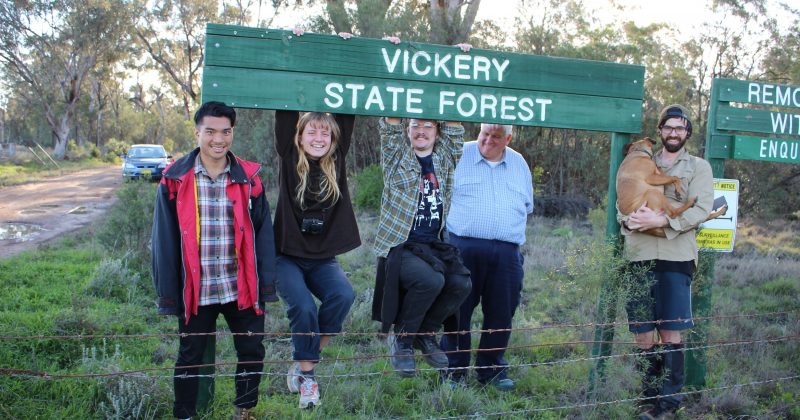Words & Pictures by Andy & Amy.
Andy is studying Geography, Political Economy & Indigenous Studies at Sydney University and has been involved with ASEN for a couple of years.
Amy is in her first year of a Bachelor of Science and Fine Arts, studying psychology and biology and has only recently, but enthusiastically, become involved in ASEN.
We recently participated in a citizen science trip up to Vickery State Forest.
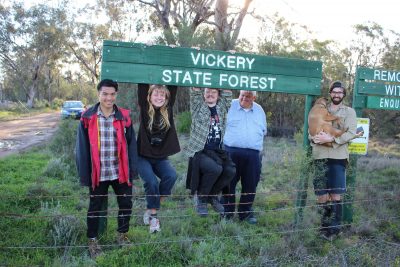
Coal & coal seam gas mining in north-western NSW has been the target of enormous protests in recent years. ASEN members have been involved in campaigns in the Pilliga, near Breeza and at the Leard Blockade near Maules Creek. There are enormous plans by the fossil fuel industry to turn the Liverpool Plains into a new Hunter Valley – a once-rich agricultural area now pockmarked by coal mines. A diverse coalition of farmers, environmentalists and the local Aboriginal traditional owners, the Gomeroi, have come together to oppose the industry’s destruction of farmland, biodiversity and cultural heritage – not to mention the contribution which these projects will have to global climate change.
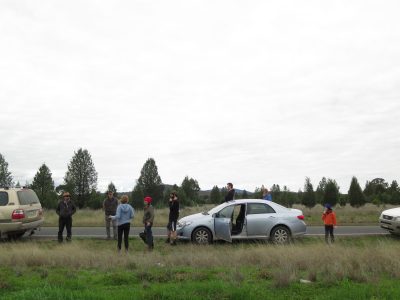
On Friday the 5th of August, we drove up to Maules Creek, spotting an echidna wandering off the road as we arrived late at night. We were welcomed with hot tea and hot water bottles, a blessing in the near-freezing north-west night. Our weekend getaway wasn’t only to check out the beautiful scenery and animals, we were there to help out the Leard Forest Research node, a citizen science group focused on effects of coal mines in & around Maules Creek on local community & environment.

Waking up to a chilly Saturday morning in a cottage on a local farmer’s property, we met some of the group – a diverse bunch of people including locals, farmers, environmentalists, Gomeroi people and other students. We drove out to the Vickery State Forest, a beautiful area to the south-east of the Leard State Forest which has been largely destroyed by open-cut coal mines. Vickery Forest is also threatened by a planned “expansion” of the Vickery coal mine, which would see the destruction of the vegetation and the animals that depend on it. It turns out this expansion is basically a whole new mine project, vastly larger than the one which was originally approved and which will be even larger than the existing open-cut mines in the area.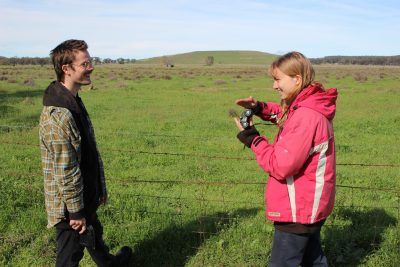
The Leard Forest Research Node is using citizen science to challenge the further expansion of coal mining in the area. Our main aim for Saturday was to do some preliminary vegetation surveys & look for Koala habitats. We broke off into groups and sure enough found some good stands of critically endangered White Box-Yellow Box-Blakeley’s Red Gum Grassy Woodland and although we didn’t spot any koalas we found some koala scats, meaning that they’re certainly around. We headed back to the cottage and a beautiful view of the sunset over the plains. On Sunday, we continued looking for koalas in another area in a travelling stock route next to the Namoi river, next to the proposed mine site. As it’s only a couple of hundred metres from the river, there is a lot of community concern about the high likelihood of impacts on the river as well as on groundwater.

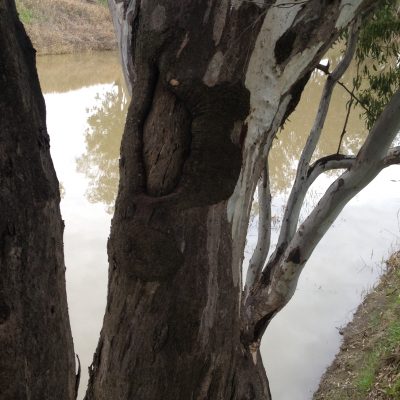
To stay tuned with the campaign, follow Front Line Action on Coal on Facbeook or Twitter, or check out their website
There is a feature documentary about the Leard Blockade, now available on DVD.
For more info about the impacts of coal mining on local farmers, ABC recently released this program.
SBS made this short piece about the destruction of Gomeroi/Gamilaraay cultural heritage by coal and CSG mining.


